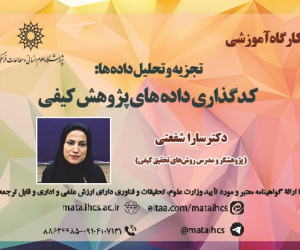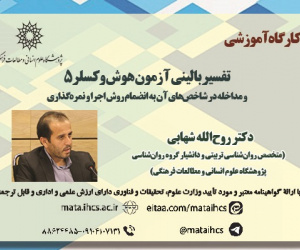واکاوی نظریه ی سکوت متنی توماس هاکین در خطبه ی الشقشقة العلوية (مقاله علمی وزارت علوم)
درجه علمی: نشریه علمی (وزارت علوم)
آرشیو
چکیده
خطبه ی شقشقیه یا مقمّصه یا الشقشقه العلویه یکی از مهم ترین خطبه های نهج البلاغه است که نوعی شکوائیه ی عمومی امام علی (ع) نسبت به غصب خلافت اسلامی است. هر چند که بیان ایشان کاملا صریح و بی پرده معضلات حکومت خلفای پیشین را برای همه ی مخاطبان بیان می کند اما نمی توان از زوایای پنهان کلام که در قالب سکوت های معنا دار ادراک مخاطبین را به چالش می کشد چشم پوشی کرد. یکی از نظریات مهم در این زمینه نظریه ی سکوت متنی توماس هاکین است که پنج شاخه ی سکوت کنشی، پیش انگاره ای، محتاطانه، نوع بنیاد و ماهرانه را در خود جای داده است. کلام حضرت به گونه ایست که بعضی از گزاره های کلام ایشان را نمی توان در یک مرز معین محصور کرد و بعضی از فراز ها در دو شاخه ی نظریه ی پیش رو قابل تعریف و بررسی است. هدف از انجام این پژوهش تحلیلی- توصیفی بازشناسی وجوه سکوت گفتمانی از منظر هاکین در یکی از برجسته ترین خطبه های نهج البلاغه است. برآیند پژوهش حاضر گواه این موضوع است که بازنمایی شعبه های سکوت هاکین در خطبه ی مذکور قابل استناد و بررسی بوده و شرایط سیاسی، اجتماعی و فرهنگی جامعه در این غیاب هدفمند زبانی کاملا دخیل بوده است. سکوت محتاطانه و پیش انگاره ای با توجه به حساسیت های جامعه ی آن زمان و بحران های پیش رو بیشترین بسامد را در این خطبه از آن خود کرده است.Analysis of Thomas Huckin's Theory of Textual Silence in the Sermon of Al-Shiqshiqiyya Al-Alawiyya
The sermon of Al-Shiqshiqiyya or Al-Muqammisa or Al-Shiqshiqiyya Al-Alawiyya is one of the most important sermons in Nahj al-Balagha, which serves as a public complaint by Imam Ali (AS) regarding the usurpation of the Islamic caliphate. Although his speech is explicit and openly addresses the issues of the previous caliphs' governance, the hidden aspects of his words, which challenge the audience's perception through meaningful silences, cannot be overlooked. One of the significant theories in this regard is Thomas Huckin's theory of textual silence, which includes five branches: active silence, presuppositional silence, cautious silence, genre-based silence, and skilled silence. Imam Ali's speech is such that some of his statements cannot be confined to a specific boundary, and some passages can be defined within two branches of the aforementioned theory. The aim of this analytical-descriptive research is to identify the aspects of discursive silence from Huckin's perspective in one of the most prominent sermons of Nahj al-Balagha. The findings of this study indicate that the representation of Huckin's branches of silence in the mentioned sermon is credible and worthy of examination, and the political, social, and cultural conditions of the society have played a significant role in this purposeful linguistic absence.







